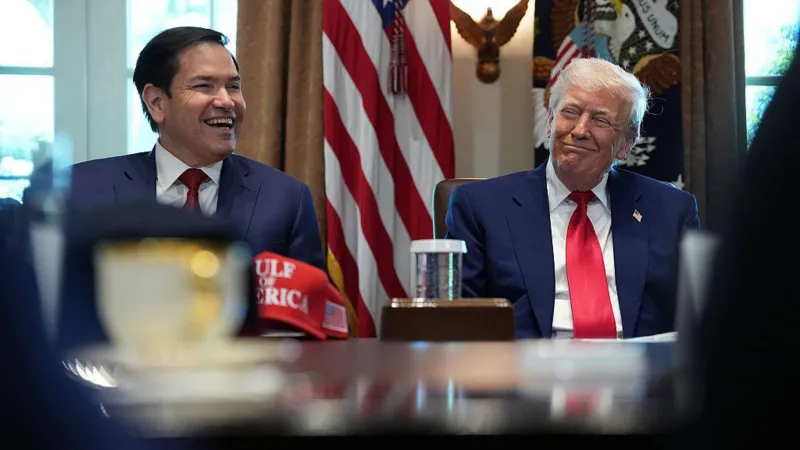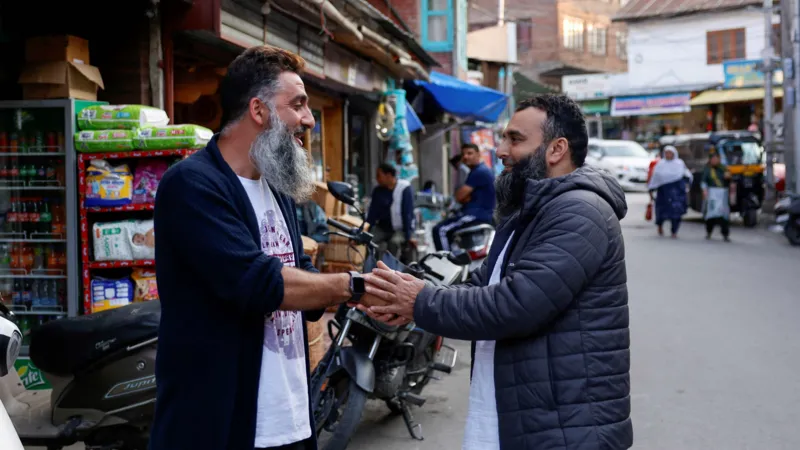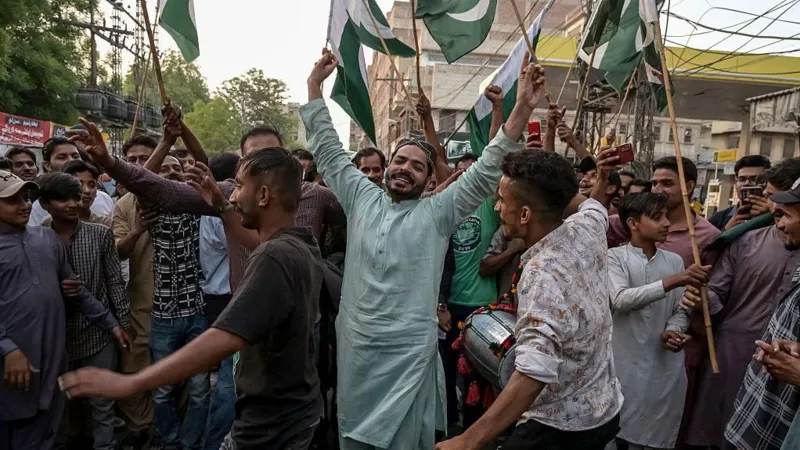In a surprising development, U.S. President Donald Trump announced via social media on Saturday that India and Pakistan had reached an agreement for an “immediate and complete ceasefire” following four days of intense cross-border hostilities.
According to analysts, efforts by U.S. mediators, regional stakeholders, and covert diplomatic channels played a crucial role in de-escalating the situation between the two nuclear-armed nations.
Despite the ceasefire agreement, tensions remained high as both countries soon accused each other of new violations, raising concerns about the agreement’s stability.</p>
India alleged ongoing violations by Pakistan, while Pakistan claimed its military forces were adhering to the ceasefire
with “restraint and responsibility.”
s=”” data-start=”847″ data-end=”992″>Prior to the announcement, relations between India and Pakistan had sharply deteriorated, with fears growing of a potential large-scale conflict.
Tensions spiked after a militant attack in Indian-administered Kashmir killed 26 tourists last month, prompting Indian airstrikes in both Pakistan and Pakistan-administered Kashmir. This escalation led to several days of aerial confrontations, artillery exchanges, and accusations of missile attacks on airbases by Saturday morning.
The situation was marked by increasingly hostile rhetoric, with both nations asserting they had inflicted significant damage while successfully defending against each other’s assaults.

Tanvi Madan, a senior fellow at the Brookings Institution in Washington, DC, noted that the phone conversation between U.S. Secretary of State Marco Rubio and Pakistan’s Army Chief Asim Munir on May 9 may have played a pivotal role in de-escalating tensions.
“While many details about international involvement remain unclear, it’s evident that the United States, along with the United Kingdom and Saudi Arabia, actively worked over the past few days to reduce tensions,” she explained.
Pakistan’s Foreign Minister Ishaq Dar mentioned to local media that around 36 nations were engaged in diplomatic efforts, highlighting the involvement of Turkey, Saudi Arabia, and the United States among them.
Madan also speculated whether an earlier intervention — perhaps immediately following the initial Indian airstrikes, when Pakistan had already reported Indian casualties during Pakistan strike and an opportunity for de-escalation existed — could have helped avoid further conflict.
This incident is not the first instance where U.S. intervention has played a role in calming India–Pakistan hostilities. In his memoir, former U.S. Secretary of State Mike Pompeo recalled being awakened to speak with an unidentified Indian official who believed Pakistan was preparing to use nuclear weapons during the 2019 standoff.

Ajay Bisaria, the former Indian High Commissioner to Pakistan, later commented that Mike Pompeo may have exaggerated both the potential for nuclear escalation and the extent of U.S. involvement in easing the conflict.
Nonetheless, many diplomats acknowledge that the United States played a significant role in de-escalating the situation.
“The U.S. was the key external actor. Previously, Pompeo claimed they prevented a nuclear confrontation. While such statements might be overstated, it’s possible the U.S. took the lead diplomatically, even echoing India’s stance to Islamabad,” Bisaria told the BBC on Saturday.
Initially, however, Washington’s response seemed notably detached.
During the height of the crisis, U.S. Vice President JD Vance stated on Thursday that the conflict was essentially not America’s concern and that the U.S. had no intention of intervening militarily.
“We can’t dictate actions to these countries. India has longstanding issues with Pakistan, and it’s not our place to force either side to disarm. Our approach will remain focused on diplomacy,” Vance said in a television appearance.
President Trump, earlier in the week, also commented, “I know the leaders of both nations well. I hope they can resolve this… I want to see them put an end to this, and hopefully they will do so soon.”

Lahore-based defense analyst Ejaz Haider noted that the primary difference in this instance compared to past situations was the initial approach taken by the United States. Speaking to the BBC, Haider explained that although U.S. involvement followed established patterns, this time Washington initially chose to observe rather than intervene. It was only after assessing how the crisis evolved that the U.S. began to engage more directly.
According to Pakistani analysts, as tensions escalated, Pakistan adopted a dual strategy—responding militarily while simultaneously announcing a meeting of the National Command Authority (NCA), signaling the looming presence of nuclear capabilities. The NCA is responsible for key decisions regarding Pakistan’s nuclear arsenal.
This period also saw U.S. Secretary of State Marco Rubio enter the scene. Ashley J. Tellis, a senior fellow at the Carnegie Endowment for International Peace, remarked to the BBC that the U.S. played a pivotal role, crediting Rubio’s involvement as essential to the outcome.
Another influential factor was Washington’s strengthening relationship with New Delhi. Indian Prime Minister Narendra Modi’s rapport with then-President Donald Trump, along with broader U.S. strategic and economic interests in the region, gave the U.S. added influence to encourage de-escalation between the two nuclear powers.
Indian officials have identified three major diplomatic tracks, echoing those used following the 2019 Pulwama–Balakot crisis: pressure from the U.S. and the U.K., mediation by Saudi Arabia—including a visit from a junior Saudi foreign minister to both capitals—and direct communication between the national security advisors (NSAs) of India and Pakistan.
Although the U.S. initially took a cautious stance, it eventually resumed its role as a central mediator. Despite varying accounts of its involvement—from being downplayed by India and Pakistan to being emphasized by American officials—analysts agree that Washington’s crisis management role remains crucial and inherently complex.
However, questions persist about the stability of the ceasefire that followed. Some Indian media outlets have suggested it was the result of direct talks between senior military leaders from both countries, rather than U.S. diplomacy.
Michael Kugelman, a foreign policy expert, told the BBC that the truce is inherently fragile, given the rapid pace at which it was reached amid intense hostilities. He warned that the agreement may lack the strong assurances necessary to endure such volatile circumstances.



















